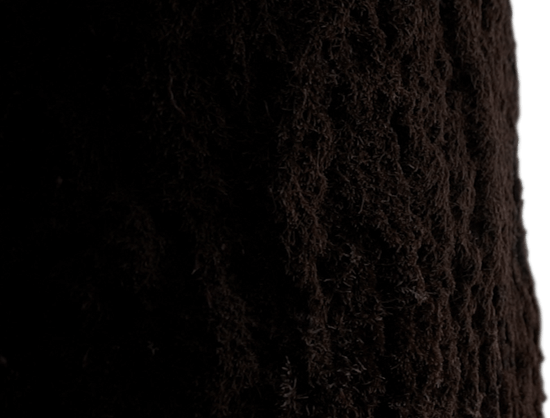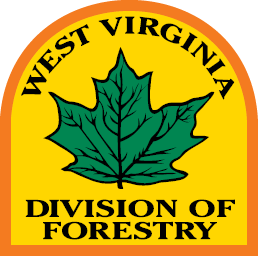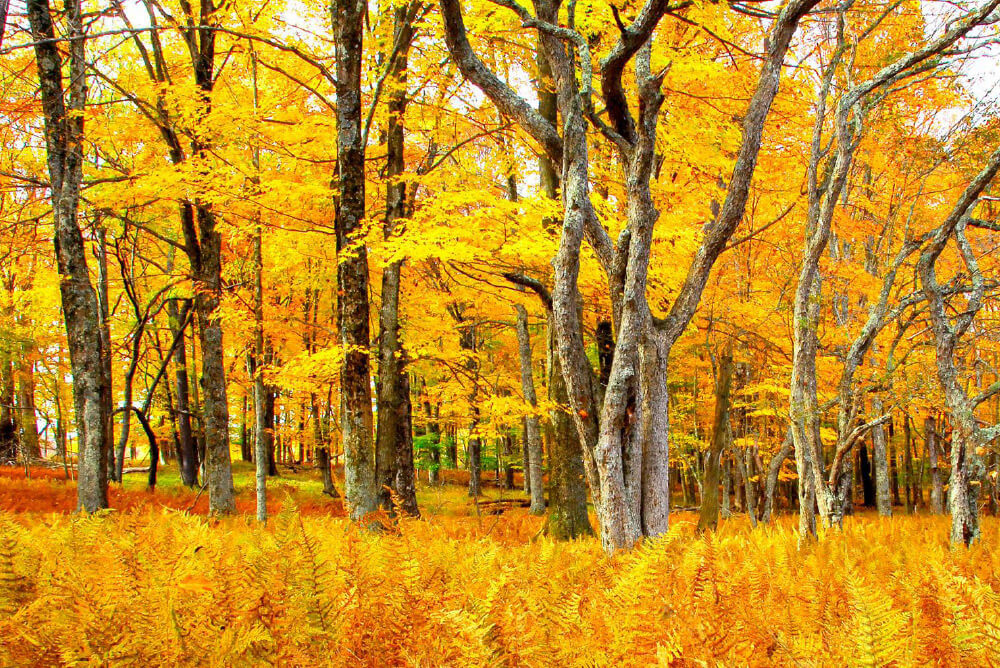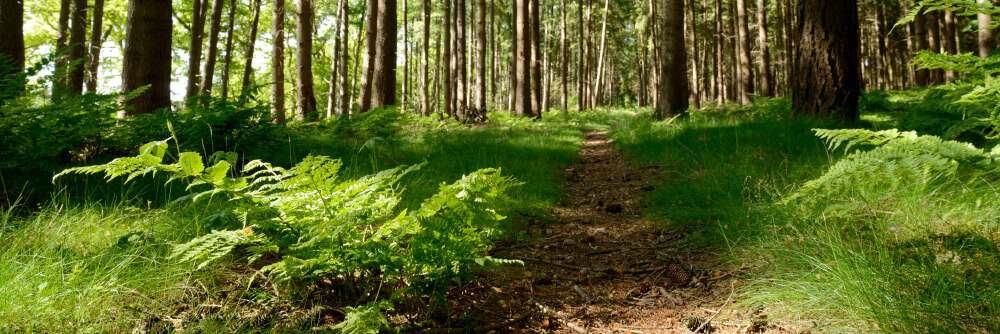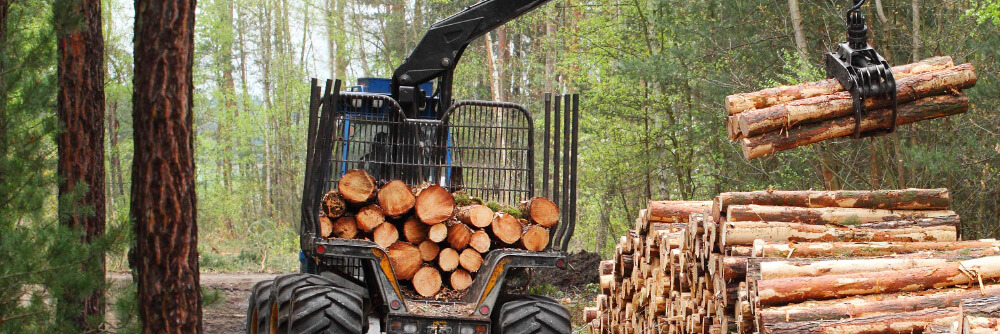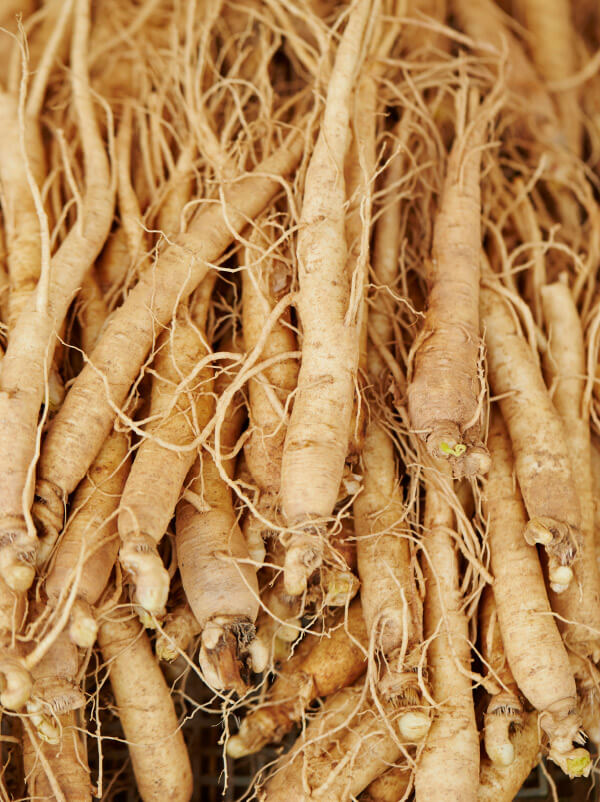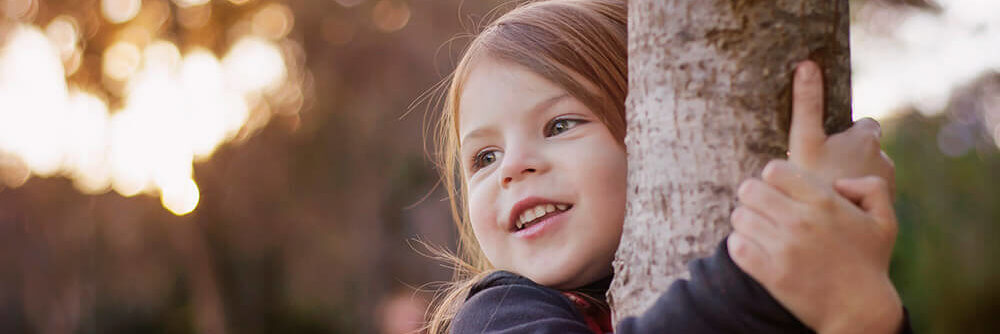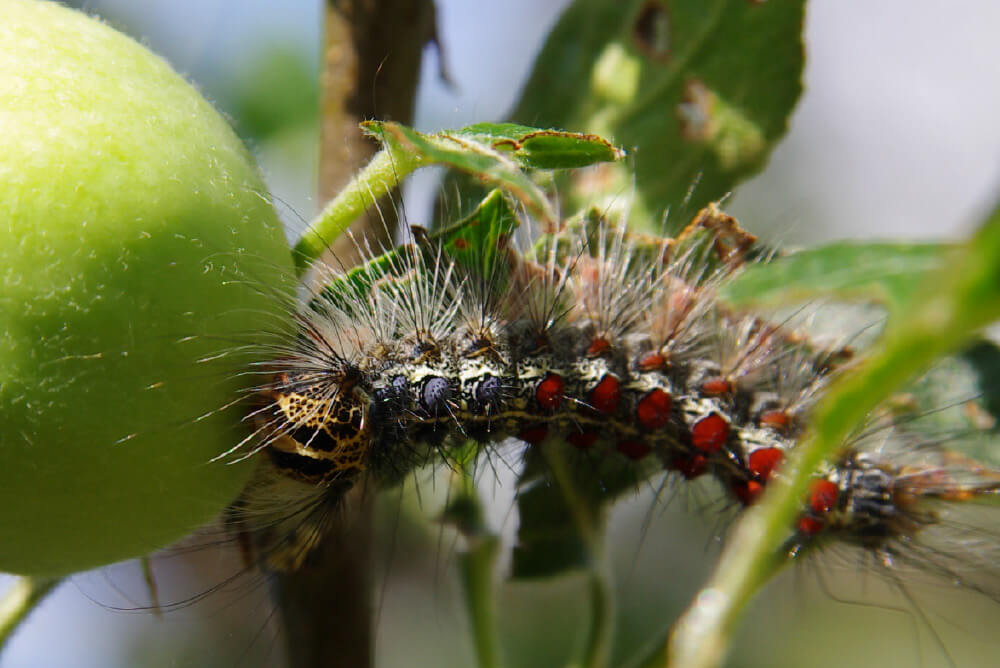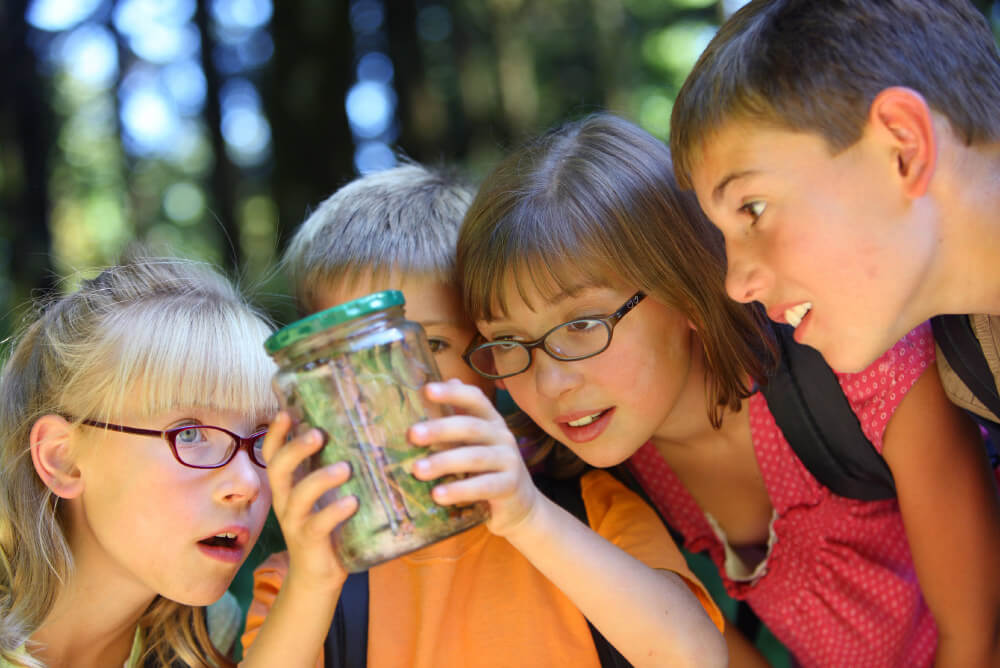Help Stop the Destruction
Species like the Spongy Moth and Emerald Ash Borer pose a real threat to West Virginia forests. It is our responsibility to reduce the spread of these destructive species by careful shipment of wood products, proper extermination procedures, and silvicultural treatments.
Emerald Ash Borer
The Emerald Ash Borer (EAB) is an exotic, metallic green beetle that can be found in 35 states, including West Virginia. Adult beetles eat ash foliage but cause little damage. Their larvae, however, feed on the inner bark of ash trees, preventing the tree from transporting water and nutrients from its roots to its branches. EAB attacks only ash trees, and is responsible for killing hundreds of millions of ash trees in North America.
West Virginia is currently under a federal EAB quarantine, which means that ash logs or products must be inspected and certified as EAB-free before they can be moved to any uninfested state.
Anyone with questions about EAB can contact the WVDA’s Plant Industries Division at 304-558-2212, or visit www.emeraldashborer.info
Spongy Moth
The spongy moth is potentially the most destructive forest pest threatening West Virginia woodlands. Since its inadvertent introduction into Massachusetts in 1869, it has spread naturally south and west at approximately 5-10 miles per year. In the last 10 years, it has been spreading across the eastern panhandle and northern counties of this state. It is presently concentrated in Jefferson, Berkeley, Morgan, Hampshire, Hardy, Pendleton, Grant, Mineral, Tucker, Randolph, Pocahontas, Preston, Taylor, Barbour, Monongalia, Marion, Hancock, Brooke, Ohio, Marshall, Wetzel, Harrison, and Upshur counties.
In the northeastern states, spongy moth populations peak every 8 to 11 years. They feed on more than 500 different tree and shrub species in forest and urban areas. Repeated heavy defoliation by spongy moths leads to the death of trees. Spruce, pine and hemlocks die after one heavy defoliation. Hardwood tree mortality after two successive years of defoliation can reach as high as 80%.
Spongy Moth Mortality Guidelines
Based upon evaluations of spongy moth mortality in West Virginia, the Division of Forestry has developed guidelines for estimating the potential mortality that can be expected following one, two or three consecutive years of spongy moth defoliation. These guidelines are simply a rule-of-thumb and may not account for all of the variation in damage that may be caused. The extent of mortality will be affected by many interrelated factors like frequency and intensity of defoliation, tree stress, actions of secondary organisms such as shoestring root rot and the two-lined chestnut borer, influence of spongy moth parasites and predators, effectiveness of control measures and weather conditions. Each of these factors are in themselves difficult to predict. Although not perfect, the guidelines do provide an indication as to where severe impacts are most likely to occur.
Using these guidelines, your timber stands were assigned hazard ratings for potential mortality from spongy moth. (Guideline for Determining Spongy Moth Hazard Rating).
5 Guidelines for Minimizing Spongy Moth Impact
1. Identify stands where severe impacts are likely.
Spongy moths attack trees by feeding on their leaves. Severe defoliation and mortality are most likely in stands having a high percentage of oak, the favorite food of spongy moth caterpillars. Generally, if 60 percent or more of a hardwood tree’s foliage is removed, the tree will produce a new set of leaves later in the same growing season. This places a heavy demand on the tree’s food reserves and makes it more vulnerable to attack by other organisms. This significantly increases tree deaths.
2. Determine when and how to treat defoliation populations.
The amount of egg masses in your woodland can help determine the amount of the invasive species present and consequently, your management objective.
Treatments to control spongy moth are needed when spongy moth egg masses reach or exceed the following levels:
| EGG MASSES/ACRE | MANAGEMENT OBJECTIVE |
| 1200 | Timber |
| 650 | Aesthetics |
| 500 | Wildlife – Mast Production |
| 250 | Recreation – Nuisance Prevention |
Inspect your woodland for egg masses sometime after the leaves drop in the fall each year. If they are found, count the number on a 1/40 acre plot. You only want to determine the number of new (current year) egg masses per acre. New egg masses are brightly colored and firm to the touch. Old egg masses are faded and spongy. To do this, step off a rectangular plot 27 feet by 40 feet. Count the number of new egg masses on trees, stumps, down logs, etc. in this area and multiply by 40 to obtain the approximate number of egg masses per acre. Egg mass counts should be made in no less than ten plots located in the stands having moderate to high spongy moth hazard ratings. Average the per acre egg mass counts and if you find 1,200 or more egg masses you can expect moderate to heavy defoliation and subsequent tree mortality unless you apply control measures to the stands. Lesser numbers, as shown by the above table, also cause problems. It should be noted that the West Virginia Department of Agriculture will conduct egg mass surveys on your property upon request.
3. Spray to prevent heavy defoliation.
Spraying is rather expensive, but well worth the money to protect high value sawlog and veneer quality trees and stands where moderate to high tree mortality is expected.
Contact your local service forester, consulting forester, or entomologists in the West Virginia Department of Agriculture, Plant Industries Division for specific control recommendations. You may be eligible to participate in the State-operated control program. If not, you will be provided with a list of aerial applicators who will treat your woodlands for a fee. Spraying must be done in May to early June when the caterpillars are small.
The West Virginia Department of Agriculture (WVDA) coordinates and conducts a cooperative regional suppression program between landowners. The county commissions in the generally infested counties. Aerial spraying is done on a demand basis to minimize forest damage. Sign-up for the program is through the WVU County Extension Office in any of the participating counties during July and August.
4. Use Silviculture to minimize impacts.
Silviculture treatments control the growth, composition, health, and quality of forests to fulfill various woodland needs. A variety of methods are used, including site selection, tree species selection, herbicides, thinning and more.
Silvicultural treatments can be used in advance of spongy moth infestation to minimize spongy moth impacts. Such treatments decrease the susceptibility to defoliation and strengthen the stand against tree mortality. Healthy, vigorous trees are more likely to survive and recover from spongy moth defoliation and to resist attack by secondary organisms. Thinnings will strengthen the stand against mortality by removing high risk trees before they are defoliated and die. High risk trees are low vigor trees with poor crowns.
5. Salvage dead trees within two years.
Despite your precautions, if the spongy moth is allowed to feed, some trees will die within one to three years after defoliation. Unfortunately, the value of veneer trees disappears as soon as they die and dead sawtimber trees lose 10 to 15 percent of their value each year they are dead because of drying checks, wood decay and wood borer defects. If possible, the salvage and utilization of dead timber will reduce the economic loss. However, the utilization of dead sawtimber trees is feasible for the first two to three years after death, and it is preferred that they be salvaged within the first year after death. Dead trees can be used for pulpwood for at least five years after death.
Spongy Moth Regulatory Program
It should be noted that a spongy moth regulatory program does exist, although it does not directly affect most landowners. The program monitors the intrastate and interstate movements of spongy moth regulated articles from spongy moth regulated areas to presently non-infested counties. Articles include nursery stock, cut Christmas trees, logs, mobile homes and outdoor household articles. More information can be obtained by calling your county Extension Agent or a local WVDA representative.
For more information on Spongy moths, visit the West Virginia Department of Agriculture or the Spongy Moth Slow the Spread Foundation, Inc.
